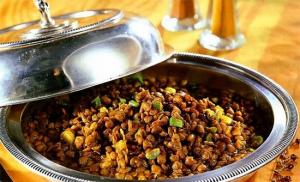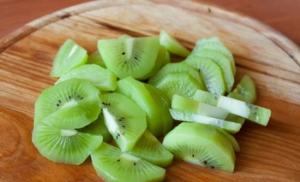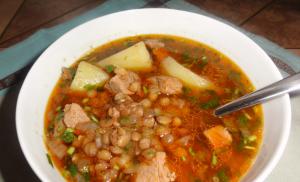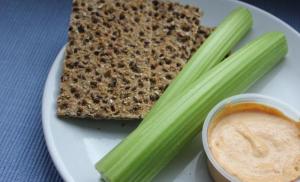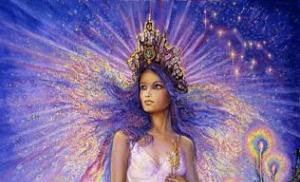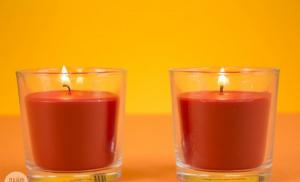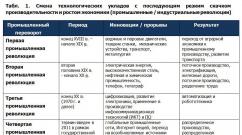Patterns for crocheting leaves. Patterns and step-by-step lessons for crocheting leaves
It's no secret that leaves are different. For each specific case when a flower is created, a special leaf is useful. Crocheting them is easy. The main thing is to know the circuit diagram.
Classic oval leaf
First, cast on a chain of so many loops that it is equal to the final length. A leaf will be crocheted on it. For example, let the number of loops be 13. An odd number is recommended due to the symmetry of the pattern.
Next, on both sides of this chain you need to knit a leaf (with a hook). The circuit is symmetrical relative to the middle of the chain. In the second and third loops, make a connecting post. The fourth loop requires a single crochet. In the fifth and sixth, one each will be placed. The next loop becomes the base. In the eighth loop (the middle of the chain), knit two stitches with three crochets. Then the columns appear in a mirror order with their length decreasing.
At the edge, tie and move to the other side of the chain. Make a drawing symmetrical to the first half of the sheet.
Now all that remains is to make a vein in the center so that the leaf (crocheted) looks more like a real one. It is made with simple connecting posts and picking up the thread from under the product.
Shamrock
You need to start knitting such a leaf (crocheted) with a chain of 12 air loops, which must be closed in a ring. In the first row, make the following stitches: 2 single crochets, 2 double crochets, 4 double crochets, 2 double crochets again and 2 more single crochets. Close the circle.
Second row: make two double crochets at each top. Close the circle and start knitting the second petal in the same way. Then the third.
Insert the hook into the bases of all three petals and pull the thread through them. Cast on 15 loops on which to tie connecting posts.

Leaf-foot
The technology of how to crochet a leaf may be slightly different. Moreover, this is often found in knitted items for decoration.
Start with a chain of 11 stitches. Tie connecting posts along its entire length. Perform a lift of 3 loops. Make a row of connecting stitches again, leaving two stitches of the previous row unknitted. Turn the work around.
An air loop and connecting posts to the end of the row, and the latter must be made into an arch of air loops. Three air loops and one more connecting one in the same arch. Make connecting stitches along the other side of the leaf, again without tying two at the end of the row. The starting chain should be in the center and be the longest.
Continue knitting in the same way until the required sheet size is obtained. There should be at least three such roundings. Otherwise the leaf will be too small.

Shamrock made of hearts
Cast on a chain of air loops, the length of which will be approximately 3 cm. You need to tie connecting posts on it. This will be the leaf cutting. Three hearts will be placed on it.
All work will be done on the front side. The hearts will form a pattern (crocheted), the leaves will be directed from the middle outward from the central circle. It must be made of 9 loops. Then tie it with connecting posts.
Cast on 8 loops from the circle and knit connecting stitches on them. The next row will produce the first half of one petal. It consists of: 1 connecting stitch, 1 single crochet, 1 half double crochet, 1 double crochet, 1 double crochet, in the last loop of the chain knit a fan of three double crochets, 4 chain stitches and a connecting stitch in the loop from which knitted fan. Then repeat everything in reverse order, in order to get the second half of the petal.
Knit the other two petals in the same way. They must be connected to each other by half-columns.

Rowan leaf
It consists of nine identical petals to create a cute and symmetrical leaf (crocheted). The pattern of each petal is formed from the following elements: connecting, single crochet, double crochet, double crochet, double crochet again, one more single crochet and connecting.
You need to start knitting with a chain of 12 loops. On the last 8, perform a petal, leaving one of the cast-on loops for lifting. Cast on 12 more stitches. Tie another petal on them. Repeat this two more times. It turned out four petals on the right side.
For the central petal you will only need to cast on 8 stitches. Do the same with the 6th petal of the leaf. After this, tie three connecting posts on a chain of air loops. Cast on 8 loops and knit a petal. Repeat two more times.
The second, third, seventh and eighth petals can be made one loop longer and an additional double crochet stitch can be knitted in the middle. This way the leaf will turn out to be closer to what is in nature.

Conclusion
To make the leaves light and airy, the yarn must be thin enough. In this case, it is better to take the smallest possible size hook. And then the decoration of flowers and leaves will be elegant and spectacular.
Crocheted leaves are often used by craftswomen as decorative elements when they need to decorate a dress, handbag or hat. Also, a hand-knitted item will be perfect as a gift for a loved one or will decorate the interior, representing an example of craftsmanship and splendor.
Tools and materials Time: 1 hour Difficulty: 6/10
- Crochet hook 2.5 mm
- Yarn of appropriate thickness
In this lesson I will give step-by-step instructions in the art of crocheting clover and chestnut leaves. So , crochet leaves. The diagram and description are quite detailed and very clear.
Step-by-step description with diagram
Clover Leaf

This scheme is very simple, even novice needlewomen can probably figure it out.
- We knit a chain of 4 air. loops Next we tie this chain in a circle: 1 air. lifting loop, 1 tbsp. single crochet in the second loop of the chain (see diagram), 1 tbsp. with a double crochet in the third loop, in the 4th loop of the chain we knit 10 tbsp. with 2 double crochets, 1 tbsp. double crochet in 3 loops and 1 tbsp. Single crochet in 2nd loop.
- Knit 2 more leaves using the same pattern.
- When all 3 leaves are ready, knit a chain of 8 chain stitches. loops, 1 tbsp. without crochet for lifting, 7 tbsp. Single crochet in each loop of the chain. When knitting the last loop of the chain, connect the finished leaves together into one branch.
Any leaves knitted from synthetic yarn or mercerized cotton look incomparable and embossed.
Our clover leaf is ready!
Chestnut leaf
This eye-catching motif, made from thicker yarn, can be used as a placemat or oven mitt in the kitchen. If you knit it from a thin material, it will become an integral element of a tablecloth, shawl or bedspread.

If, when crocheting a leaf, you hook both arms of the loop, the motif will turn out flatter. If you knit it by 1 arc, the leaf will be more prominent.
Knit a chain of 10 air. loops and close into a ring.
- 1st row: knit 2 tbsp in each loop. with 2 double crochets, and between the columns 3 air. loops (see diagram). We replace the first column with 4 air. lifting loops.
- 2nd row: 3 air. lifting loops, 2 tbsp. double crochet in the first loop of a chain of 3 loops, 3 tbsp. with a double crochet in the 3rd loop of the chain, 3 air. loops, 3 tbsp. double crochet in the first stitch of the next chain of 3 stitches, 3 tbsp. double crochet in 3 loops, 3 air. loops. We knit 10 fragments in this way.
- 3rd row: 3 air. lifting loops, 3 tbsp. with a double crochet in a chain of 3 chains. loops, 3 air. loops, 4 tbsp. double crochet in the same chain of 3 chains. loops, 4 tbsp. with a double crochet in the next chain of 3 chains. loops, 3 air. loops, 4 tbsp. with a double crochet in the same chain. Knit only 9 motifs in this way, do not knit the 10th. Turn the work to the wrong side.
- 4th row: 3 air. lifting loops, 4 tbsp. with a double crochet in a chain of 3 chains. loops, 3 air. loops, 3 tbsp. double crochet in the same chain, 5 tbsp. with a double crochet in the next chain of 3 chains. loops, 3 air. loops. Knit all 9 fragments.
- 5th row: 1 air. lifting loop, tie 11 tbsp above the first fragment. single crochet (over the loops knitted in the first fragment of the previous row), 3 air. lifting loops, 5 tbsp. with double crochet, 3 air. loops, 6 tbsp. double crochet In the same row you need to knit only 7 motifs in this way.
- 6th row: 3 air. lifting loops, knit 7 fragments as follows - 7 tbsp. with double crochet, 3 air. loops, 7 tbsp. double crochet Knit the last 2 stitches together with one top.
- 7th row: 1 air. lifting loop, then we knit one fragment of the previous row with single crochets, 3 air. lifting loops, knit the remaining 5 stitches like this - 8 tbsp. with double crochet, 3 air. loops, 8 tbsp. double crochet We knit the last 2 double crochets together with one top.
- Row 8: knit 5 fragments – 9 tbsp. with double crochet, 3 air. loops, 9 tbsp. double crochet At the beginning of the row, replace the column with three air stitches. lifting loops.
- 9th row: 1 air. lifting loop, tie the first fragment with 20 st. without crochet, 3 air. lifting loops, then we knit only 3 fragments - 10 tbsp. with double crochet, 3 air. loops, 10 tbsp. double crochet We knit the last 2 columns with one vertex.
- 10 row: 3 air. lifting loops, knit 3 fragments - 11 tbsp. with double crochet, 3 air. loops, 11 tbsp. double crochet We replace the first column with lifting loops.
- 11th row: 1 air. lifting loop, we tie the entire first fragment with 24 st. without crochet, 3 air. lifting loops, knit the remaining 1 fragment - 12 tbsp. with double crochet, 3 air. loops, 13 tbsp. double crochet We knit the last two columns with one vertex.
- 12 row: 3 air. lifting loops, 13 tbsp. with double crochet, 3 air. loops, 14 tbsp. double crochet We knit 1 fragment. We knit the last 2 columns together again.

Maple leaves knitted in this way according to our pattern can be tied along the edge with a row of double crochets with threads of a different color. This will make the product more vibrant and exclusive.
In this lesson I tried to give you step by step instructions crocheting chestnut and clover leaves, as well as a diagram and description, and the final result will depend on your imagination. Good luck in job!
| Knitted clover leaf |
| Knitted oak leaf |
| For example, how you can use knitted leaves in a composition: |
| Knitted maple leaves |
| Maple leaves can be used to decorate dresses, skirts, or knit a stole from them. |
Crochet has always been in demand, but to varying degrees. Today this type of needlework is more popular than ever. Classic types of knitting are integrated: the fillet knitting pattern becomes the border of a summer jacket; elements of guipure tablecloths - a lush decor of blouses. The brims of hats are knitted with napkin patterns, and the yokes of jackets are knitted with collar motifs. There are many examples. This is a natural process, a kind of creative game. The value lies in the preservation of traditions and their modern embodiment.
Have you noticed, dear craftswomen, that the emphasis in knitting is on complex options that cannot be reproduced on a knitting machine? One of these trends is guipure. It is designed as an imitation of intricate and expensive Venetian embroidery.
The best examples of such crocheted lace were produced by Irish nuns, so over time it began to be called “monastic”, and later - Irish guipure. Please do not confuse it with Irish lace, which differs from guipure in its method of execution. Classic guipure knitting is complex and painstaking. Since it imitated lace embroidered with a needle, they used lace linen, thin cream or white paper threads for knitting elements and very thin ones for nets and brids. Modern fashion takes into account our busyness, the fast pace of life, and the desire to quickly realize a planned product. She favors large-knit models made from thick yarn. This is beneficial for beginning craftswomen. You may have noticed that the mesh holding the elements together is rarely used. “Adhesive” guipure fabrics are relevant. The elements have become larger, the thread is thicker.
So, let’s assume you are planning to knit a blouse entirely or a fragment of it with guipure elements. It is advisable to first draw a sketch on the pattern; you can improvise as you knit. The majority of the composition is occupied by leaves. There are many patterns for knitting leaves in various books and magazines. It is impossible to discuss their diversity within the scope of this article.
For example, it is customary to knit a classic guipure sheet in two ways: with an extension from one sc (pattern 1) and with an extension on the arch (pattern 2). In this case, the knitting methods can be different: for both half-loops, for the back half-loop, for the front half-loop, for the purl horizontal half-loop of the columns of the previous row.
The texture of the sheet in the first photo turned out to be flat, in the second - ribbed.
| Photo1. The sheet is crocheted according to pattern 1 using both half loops: |
| Photo 2. The sheet is crocheted according to pattern 1 using the back half-loop: |
| Photo 3. Complex sheet. |
| Crochet pattern for leaves 1 and 2: |
| Photo 4. Sheet 1 is crocheted according to pattern 2. |
| Pattern 3. Crochet a leaf. |
| Pattern 4. Crochet a leaf. |
The shape of the leaf, knitted according to scheme 1, is wide at the cutting and sharp at the end. The increments on the arch according to scheme 2 create a sharper leaf shape on the cutting. At large quantities cast on air loops (10-12) and the generally accepted indentation of 2 single crochets, the sheet turns out to be wide. The leaf denticles are concentrated on the front part; the stem has a smooth leaf. This form is good when combining them into a complex sheet (photo 3). With a small number of air loops in the initial chain (4-6), the sheet turns out to be narrow and, when knitting in multiple rows, long. The cloves are located along the entire length of the leaf (sheet 2 in photo 4).
What if the composition requires a large sheet with teeth along its entire length? Increase the number of single crochet stitches (diagram 3).
For clear, ornamental compositions, one or two types of leaves are used. In the sketch, leaves of different sizes and shapes are drawn: small and large, smooth and curved. The rotation of the sheet is obtained by knitting different numbers of sc on the left and right sides of the arch: 1 and 2, 2 and 3 give a slight turn of the sheet, and 1 and 3 - a steeper one. Sheet 4 in photo 4 is associated with a rotation in one direction (diagram 4). Such a variety of shapes and sizes of leaves only decorate the composition.
To be continued …
Let's continue the conversation about knitted leaves.
Diagram 5 shows a sheet in which the turns are connected alternately in different directions. A variety of leaf shapes decorates the composition and gives it expressiveness. Experiment too. How else can you get curved leaves? In addition to toothed leaves, there are rounded and arbitrary leaf shapes. Often found in compositions are small leaves connected by columns of different sizes. To add rigidity and beauty, tie them with single crochets with a “picot” or “crawfish step” (see diagram 6 and 7).
Tip: do not knit more than 2-3 half-stitches in a row. Their function is to create a smooth transition from single crochets to double crochets.
By analogy with knitting small leaves, it seems logical to knit medium-sized leaves in double and triple crochet stitches. Yes, this is possible, but the sheet, even after tying, turns out to be somewhat loose. Medium-sized leaves will look better if you knit them with single crochets, half crochets and single crochets on both sides of the VP chain (Diagram 8). Tie such a sheet with single crochets twice at the same column heads. Of course, add a single crochet on the rounded areas of the sheet. For the cutting, knit 6-7 chain stitches and tie single crochets on them in the opposite direction.
Another leaf option: knit stitches of different sizes on single crochets, with which you tie a chain of air loops on both sides (diagram 9).
Tie this sheet with a bourdon: fold the knitting thread in half (this is a bourdon), fasten single crochets in the middle of the bourdon, fold the bourdon threads together. Then hold the thread along the fabric and tie it with single crochets. Having tied the leaf completely, tie 6-7 sc around the thread (on the bourdon) for the leaf stalk. Knit the VP, tear off the bourdon unevenly, attach the rest to the knitting and knit the sc in the opposite direction. Lastly, tie the connecting posts at the base of the sheet, break the thread and pull it to the wrong side. Use the tail of the thread to sew the elements together.
If you plan a fabric made of openwork, transparent elements, then the method of knitting the leaves changes. The diagrams show options for such leaves: small (diagram 10) and medium (diagram 11). Tying two rows of sc will give shape.
Two more options for openwork leaves are presented in Diagram 12.
To be continued …
The article was prepared based on publications from Fashion Magazine.
| Model 2: another flower from a Japanese magazine. You can use it to make a wonderful brooch. |
| Model 3.Flower: knit a chain of 6 vp. and make it 1 connection. Art. in a circle Knit according to the pattern in circular rows, replacing the first loop of each circular row with a chain stitch of the beginning, the number of which is indicated in the pattern. And finish 1 connection. Art. in the last v.p. started. |
| Model 4. This flower is from a foreign magazine. I translated according to the meaning. |
| Model 5. Relief rose. Motive to knit according to the pattern. Start from point A 9 ch and close these loops into a connecting ring. Art. In the first row of Art. b/n knit around v.p. In the next row, knit loops under both threads and around the lower chs. In the 4th and 6th rows we knit s/n stitches by introducing a hook from the wrong side of the motif from right to left around the st. b/n or art. s/n of the penultimate row. |
| Model 6.Flower: knit a chain of 5 chains. and concluding it with 1 connection art. 6/n into the ring. 1st round row: 1 ch. beginning *3 v.p. 1 tbsp. b/n in the ring, repeat from * 2 times, 3 air. p., 1 connection Art. in air p. beginning. 2nd circular p.: 1 air. p. beginning, * 1 tbsp. 6/n into the air arch. p of the previous circular row, 4 tbsp. s/n. 1 tbsp. 6/n, repeat from * 3 times. 1 connection Art. in air n. beginning. 3rd circular route: 2 air. p., perform between the 2nd and 3rd art. s/n 1 tbsp. b/n in the arch made of air. n. 1st circular r., 5 air. p., repeat from * Zraz, 1 connection. Art. in the 1st art. 6/n. 4th circular route: 1 air. p. beginning, * 1 tbsp. 6/n into the air arch. p., 8 tbsp. s/n, 1 tbsp. 6/n, repeat from *Zraz. 1 connection Art. in the air beginning 5th circular p.: 1 air. n. beginning. * 4 air. p. perform between the 4th and 5th art. s/n 1 tbsp. 6/n into the air arch. n. 3rd circular r., 4 air. p., 1 tbsp. 6/n in the next st. 6/n 3rd circular r. Repeat from * 3 times, ending with 1 connection. st b/n in v.p. started. *1 tbsp b/n, 6 tbsp s/n, 1 tbsp. b/n in the arch from v.p. previous row, repeat from * 7 times, finish 1 connection. st instead of st. b/n in air n. beginning. |
| Model 7 without description, only diagram. |
| Model 8 without description. |
| Model 9. Double-layer flower. |
| Model 10. |
| Model 11. |
| Model 12. |
| Model 13Description: use 2-layer purple yarn to knit a flower according to pattern A and 2-layer blue yarn to knit a flower according to pattern B. Place the flowers on top of each other. Sew 3 beads in the middle. |
VN:F
The article about knitted flowers turned out to be quite popular. Therefore, we continue to publish a collection of knitted flowers.
Pansies:
We knit the first flower according to pattern 1. Cast on 6 chain loops with eggplant-colored yarn, close them in a ring. Knit the 1st and 2nd row according to pattern 1. Knit the 3rd row in orange.
Knit the second flower according to pattern 2. Cast on 6 air loops and close them in a ring. Using orange yarn, knit from 1st to 4th row in pattern 2.
Bud: cast on 6 air loops from eggplant-colored yarn, close them into a ring. Knit rows 1-4 according to pattern 3.
Assembly:
Starch the flowers and bud, place the second flower on the first, place on a plastic stem and secure with stamens. Place the buds on plastic stems.
| Knitting pattern for trefoil - brooches |
| The following flowers are very easy to connect together |
We continue to publish a collection of knitted flowers.
Knitted daisies.
The core and petals of the flower are knitted with contrasting threads.
We knit a small flower:
cast on 5 air loops and close them in a circle with a half-column.
1st row: one air loop for lifting, 12 single crochets.
2nd row: *7 chain stitches, in the second loop we knit a single crochet and then 6 single crochets, we knit the 6th stitch in the second circular stitch*; repeat from * to * 5 more times (you will get 6 petals in total).
Row 3: tie all the petals according to pattern 1.
Core of a small flower:
cast on 2 chain stitches.
1st row: 5 single crochets in the 2nd chain stitch
Row 2: We knit 10 single crochets behind the back wall of the loop of the previous row.
Row 3: increase through 1 stitch = 15 stitches.
For a small flower you need to finish knitting and break the thread. For a large flower we knit the 4th row: we make increases through 1 loop = 22 loops.
We knit a large flower according to pattern 2.
| Knitting pattern for daffodils: |
A knitted leaf can act as an important part of a floral arrangement, or become one of the motifs in the knitted fabric of a future item of clothing. In any case, crocheted leaves are a decorative element that will always be in demand among knitters, because they decorate knitted items not only for children’s, but also for adults’ wardrobes. Moreover, in combination with bright colors or berries, the leaves will become a real highlight in decorating women's accessories (hats, handbags, shawls), as well as all kinds of interior items (three-dimensional paintings, flower vases, photo frames).

Knitted leaves are widely used in Irish printed lace; with their help, they create magnificent relief fabrics for further transformation into clothes of incredible beauty.
However, if there are simply an incredible number of master classes on knitting openwork volumetric flowers, then the craftswomen pay less attention to the leaves, and accordingly, it is not so easy to find instructions for knitting them. That is why today we propose to consider in detail the process of knitting various variations on the theme of knitted crocheted leaves that our dear needlewomen can safely use in their creativity.
We suggest you start learning the basic rules of crocheting leaves right now! Moreover, nature gives us ideas for knitting leaves, and their various shapes and variety of shades make it possible to practice not only crocheting skills, but also the most unexpected fantasies!
Clover leaf: simplicity in detail

Let's start our lessons on knitting leaves with the easiest one to do - the clover leaf. Despite the simplicity of knitting, such a leaf looks advantageous as a decoration for items of clothing, especially for children's wardrobes.
To get such a leaf, it is advisable to take thin cotton yarn “Iris”, as well as a hook No. 1-1.5. To decorate knitted hats or make decorative interior elements, you can try knitting it with a thick thread, we are sure that the leaf will turn out just right!
Conventional abbreviations:
- VP – air loop;
- runway – lift runway;
- СС – connection column;
- RLS – single crochet;
- Dc – double crochet;
- C2H - double crochet stitch;
- PR – previous row;
- PS – half-column.
The knitting pattern for a leaf looks like this:

We begin to knit a clover leaf by making separate leaves, which will be attached to each other as we knit, and then the stalk itself will be knitted.
Leaf: we collect a chain of 5 VP. We knit the first row with the second VP, we knit 1 sc into it, then - dc, in the last one. We knit a loop 10 C2H. On the opposite side of the chain we knit a dc and sc, completing the row of sl sts in the last row. VP basics. We cut off the loose thread.

By analogy, we knit a second leaf, use a SS to attach it to the first leaf, and cut the thread.

We start knitting the third leaf, again we attach it with a SS to the second leaf, but leave the thread to continue knitting the stem.

Stalk: From the free loop remaining after attaching the leaves, we knit 9 VPs, we knit 1 CC into each of them to “strengthen” the stem.

The clover leaf is ready! To complement the composition, you can imitate the clover color. To do this, we make a pompom from colored thread, knit a longer stem, and connect all three parts together.
Sheet based on Irish lace

Many craftswomen are either interested in Irish lace, or secretly glance at this technique, dreaming of learning the basics of knitting in the style of Irish typesetting. So, leaves are the basis of Irish knitting. We agree, knitting them is much more difficult, but the result is worth it! Let's try?
Schematically, knitting a leaf in the Irish style looks like this:

Let's start work
1. We knit the base from 13 VP.
2. Next We start the row in the 11th VP. Then we knit 2 sc + 2 hc + 2 dc + 2 dc connected by one vertex + 2 dc connected by one vertex. From the last loop - 6 dc.
3. From the next 4 loops we knit 2 double dcs from each loop of the chain, then 2 dcs, 2 hcs, 2 scs. We finish the row with SS.
4. There is no need to turn the knitting over; we immediately tie the entire leaf in a “crawfish step” in the opposite direction.
5. To give the leaf more relief, we knit a vein in the middle with a thread of a contrasting color - we hold the thread from the bottom of the leaf, we draw the hook through the entire leaf with through loops. We continue to the loop from which 6 dc are knitted.

6. Now you need to remove the hook from the loop; insert it under the bottom of the leaf. We hook the loop and pull it inside out. Cut off and hide the thread under the knitted loops.
7. To get a leaf curved in the other direction, at the beginning we knit a row with forked stitches, and after 6 DCs - double ones.
Leaf with ribbed corners

Leaf knitting pattern:

In order to start knitting such a leaf, you need to knit a base of 13 VPs (12 VPs + 1 VP rise).
We knit the 1st row: 1 RLS in the third VP of the chain from the hook + 9 RLS in the next row. 9 VP chains + 5 RLS in the next row. VP chain from hook + 9 sc in next. 9 next VP from the reverse side of the chain. Rows 2-5 are knitted by analogy, in the forward and reverse directions. Finish SS. Cut the thread and hide it inside the loops.
With the help of such knitted leaves you can make interesting decorative elements, for example, a crocheted napkin made of embossed flowers connected to each other by openwork motifs.
Maple leaf potholder

The idea of knitting such a bright autumn leaf can be used in two ways - as clothing decor, an element of a large fabric, a mini-napkin or as an independent kitchen oven mitt.
To knit a maple leaf, you need to take 25 grams. golden beige and approximately 5 gr. dark red yarn (cotton, acrylic) and hook No. 1.5.

Step-by-step knitting:
1. We collect a base of 8 VPs, close it into a ring using SS.
3. 3 runways, then knit repeating combinations 6 times - 2 dc between the second and third dc in the row from the hook, 2 ch, 2 dc between the second and third stitch in the row in the hook. Next - CCH in the last one. SSN PR.
4. We knit further according to the above schematic pattern, in straight and reverse rows. At the end of the third row we break the thread. We attach it strictly as shown in the diagram to knit the fourth row. We do the same to move to rows 5-8.
5. Attach a dark red thread, knit in a circular manner using RLS, and do not forget to perform 3 picots over each vertex located on the sides of the leaf and 5 picots over the one located in the center. SS. Cut the thread and hide it inside the loops.
6. We knit the stalk - we attach the thread to the base of the leaf using a SS, we knit a chain of 20 VP. Then we knit a dc in the fifth ch from the hook, 15 dc in the next row. 15 VP of the chain base.
Lightly moisten the maple leaf with starch solution, iron it, and leave until completely dry. The mini napkin or oven mitt is completely ready to use!
Decorative mini leaves for roses


Cute little juicy leaves will definitely attract those who cannot pass by such miniature beauty! You can connect them now, and, with the proper skill, this process will take a little time.
Knitting pattern:

Let's start knitting:
1. Chain of 7 VP + 1 runway.
2. In each VP we knit the bases according to RLS.
4. Row No. 3: VP + RLS + 2 VP 7 times, + 2 VP + SS + VP, repeat this combination on the opposite side of the leaf. SS.
5. We knit the other two leaves according to the same pattern. We sew all three leaves together, in the center we sew a pre-knitted rose or, if desired, any other knitted flower. With such a bright composition you can safely decorate clothes, hair accessories and even home furnishings.
Crocheted strawberry leaf - juicy, beautiful, original


To knit such a leaf, we will need thin cotton yarn, as well as hook No. 1.
Progress:
Zero row: chain of 11 VPs.
A We focus on: In order for the sheet to be embossed, it is necessary to knit with single crochets, hooked onto the back half-loop.
Row No. 1: in the 2nd VP from the hook we knit 8 sc + 2 sc in one loop + 9 sc.
Row No. 2: 3 PS + 1 VP + 7 RLS + 3 RLS in one loop + 8 RLS.
Row No. 3: 1 VP + 8 RLS + 3 VP in one loop + 9 RLS. Row No. 4: 3 PS + 1 VP + 7 RLS + 3 VP in one loop + 8 RLS.
Using this principle, we knit the desired number of sheets, sew previously crocheted berries and strawberry flowers onto them - the most beautiful brooch is ready!
Such leaves, especially in combination with berries, look ideal on children's clothing - hats, dresses and blouses. But we encourage you to experiment and not stop there, trying to combine them with other flowers and berries.

Crochet Sheet Patterns
For experienced craftswomen who can easily understand schematic crochet patterns, we have collected a large selection of leaves of various shapes and varying complexity of execution. We are sure that you will definitely find an interesting option for yourself that has not yet been tried before!
Crocheting leaves is as easy as crocheting the flower itself - follow the crochet pattern and description. Having grasped the essence of the work, in the future you will be able to knit simply from a photograph of the model you like.
We are pleased with the wide variety of leaf shapes - just like in nature. You can come up with some options for your own work. You can see the ideas.
Typically, yarn is taken of the same thickness as for the main element. Although the texture of the thread may be different - smoother and shiny or, conversely, fluffy. When decorating clothes, it is better to use the same types of yarn. Although, it all depends on the specific sample and your creative approach to work.
Crochet oval leaves
The easiest to work with and the most common type of leaf is oval.
First, the central row is knitted - a chain of air loops, preferably an odd number. Its length is equal to the size of the finished element. This will be the “vein” of the leaf; for it you can take yarn of a different shade, darker.
The second and third loops are connecting posts. To make the sheet take on an oval shape, we will increase the number of yarn overs towards the center of the sheet and decrease towards the edges.
For example, if the number of air loops = 13, then the fourth loop is a single crochet, the fifth and sixth are double crochets, the seventh is double crochet, and the eighth is triple crochet.
At the end, make a connecting stitch and knit the opposite side of the leaf

Upon completion of the element, you can additionally highlight the central “vein” (if knitted with thin threads). To do this, knit simple connecting posts along it, picking up the lower loops
You can knit a wider sheet on this basis by tying the entire element with a row of more columns

Knitting a clover leaf (shamrock)
The order of crocheting a clover leaf: 2 petals separately, the third petal and stem, joining the first two petals

First you need to knit a chain of 5 air loops. Having skipped the last 2 loops, we knit 1 single crochet into the third loop from the edge. Then in the second loop from the edge - 1 double crochet. And in the last loop you need to knit 10 double crochets at once.
Next, we return to the second loop and knit 1 double crochet behind the other wall, and 1 single crochet into the third. At the end, connect the stitches into the next air loop and secure the thread. This turned out to be 1 clover petal.
Now we knit 2 more of the same elements, but in the last one we do not fasten the thread and we knit the stem of the leaf. We make 9 air loops, skip the last loop and knit connecting stitches along the entire length of the stem chain. Then attach the first loops of each petal with connecting posts.
These were the 2 simplest elements of the “Leaf”. Check out other options
Crochet leaf patterns
Maple leaf - diagram




Rowan leaf

Chestnut - knitting pattern


Leaf "Paw"


Various options for knitting leaves
